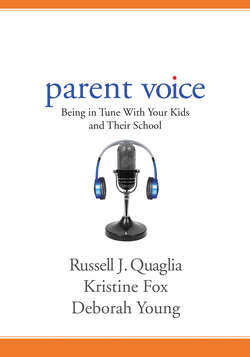Читать книгу Parent Voice - Russell J. Quaglia - Страница 13
На сайте Литреса книга снята с продажи.
The New Language
ОглавлениеTexting has firmly secured its place in today’s society—for better or worse. Let’s start with the drawbacks. Texting allows us to be somewhat lazy and, in an ironic way, disconnected. Full-sentence, in-person conversations are replaced by abbreviations, acronyms, and emojis. Consider this (actual!) text exchange:
How r u?
IDK
What do u want for dinner?
Watev
Where r u?
Upstairs
TTYL ☺
Who would have ever thought that the word “you” could become even shorter?! And with the abbreviations, there are the multiple meanings to consider: NP can mean “no problem” or “nosy parents.” As far as being lazy goes, have you ever found yourself texting your child . . . when they are only as far away as another room? We have!
While texting can seem distant and disconnected in some ways, it is an incredibly convenient way to stay connected. It is great for coordinating logistics and a good conversation starter for someone who may be shy in person. For parents whose work takes them away in the evenings, who travel for weeks, or are away for months at a time, texting is an invaluable way to continually let children know you are thinking about them. In addition to its convenience, texting is powerful because it is in our children’s wheelhouse. While we may not be able to keep up with their ever-evolving texting language and, by the way (BTW) (“Mom, you don’t need to spell the entire word!”), using the medium they are so comfortable with increases your opportunities to connect.
No matter where texting falls on your preference scale, it is still important to have live conversations, for those conversations provide cues through tone of voice and body language that are important for interpreting emotions in a conversation. For many parents, including ourselves, “live” includes Skype and Facetime. Remember to periodically ask yourself:
Have I recently paid attention to the expression on my child’s face during a discussion? (Emojis do not count.)
What was the last thing I discussed in person, on the phone, or through video chat with my child? What did his tone of voice tell me?
Have I recently walked into the other room to start a conversation instead of texting my child?
Texts undoubtedly have a place in communication, but live conversations still matter. TMWFI (Take my word for it!). Modeling voice and supporting children’s voices requires parents to engage in real conversations. Next time you pick up your phone to text your child, consider talking instead. And think about how tone of voice, facial expressions, and/or body language impact your understanding of the conversation, your child’s mood, etc.
